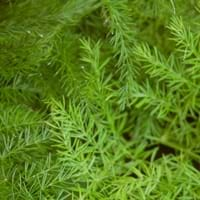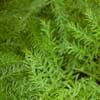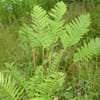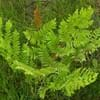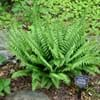Life Span
Perennial
Perennial
Type
Fern
Flowering Plants, Fruits, Trees
Origin
Eastern Asia, Southern Asia, Southeastern Asia
Central America, Europe, North America
Types
Asparagus setaceus,Asparagus meyeri,Asaragus densiflorus
Not Available
Number of Varieties
Not Available
Habitat
moist forests
Hedge, Scrubs, Woods
USDA Hardiness Zone
10-15
4-8
AHS Heat Zone
12-10
Not Available
Sunset Zone
17, 23, 24
Not Available
Habit
Clump-Forming
Not Available
Flower Color Modifier
Bicolor
Not Available
Leaf Color in Spring
Light Green
Dark Green
Leaf Color in Summer
Light Green
Green
Leaf Color in Fall
Light Green
Brown, Green, Light Yellow
Leaf Color in Winter
Light Green
Not Available
Leaf Shape
Bell Shaped
Oblong
Plant Season
Spring, Summer, Fall, Winter
Summer
Sunlight
Partial Sun
Full Sun, Partial shade
The pH of Soil
Neutral
Neutral
Soil Drainage
Average
Well drained
Bloom Time
Spring
Fall, Summer
Tolerances
Not Available
Drought
Where to Plant?
Container, Ground
Ground
How to Plant?
Seedlings
Grafting, Seedlings, Transplanting
Plant Maintenance
Medium
Medium
Watering Requirements
Keep the ground moist but not water-logged
Medium
In Summer
Lots of watering
Lots of watering
In Spring
Moderate
Moderate
In Winter
Average Water
Average Water
Soil Drainage Capacity
Average
Well drained
Sun Exposure
Partial Sun
Full Sun, Partial shade
Pruning
Remove damaged leaves, Remove dead branches, Remove dead leaves
Prune when plant is dormant, Remove dead or diseased plant parts
Fertilizers
All-Purpose Liquid Fertilizer
All-Purpose Liquid Fertilizer
Pests and Diseases
Not Available
Aphids, Curculio occidentis, Japanese Beetles, Leaf Rollers, Leafminer, Mites, Red blotch, sawflies, Scale, Stink bugs
Plant Tolerance
Drought
Drought
Flower Petal Number
Single
Single
Foliage Texture
Bold
Medium
Foliage Sheen
Matte
Matte
Attracts
Birds
Not Available
Allergy
gastro-intestinal problems, Skin irritation
Digestive Problems, Respiratory problems
Aesthetic Uses
Hanging Basket, Showy Purposes
Showy Purposes
Beauty Benefits
Not Available
Beautiful Skin
Environmental Uses
Air purification
Food for birds
Medicinal Uses
Not Available
Anthelmintic, Antibacterial, Astringent, Hypnotic, Laxative, Refrigerant
Part of Plant Used
Stem
Fruits
Other Uses
Not Available
Edible syrup, Jam, Jelly, Used As Food
Used As Indoor Plant
No
No
Used As Outdoor Plant
Yes
Yes
Garden Design
Container, Foundation, Groundcover, Houseplant, Mixed Border, Tropical
Not Available
Botanical Name
MICROLEPIA strigosa
Malus sylvestris
Common Name
Asparagus Fern, Common asparagus fern, Plumosa Fern
European crab apple
In Hindi
Lace Fern
european crab apple
In German
Feder-Spargel
Der Holzapfel, Europäischer Wildapfel
In French
Lace Fern
Le Boquettier, le Pommier sauvage ou Pommier des bois
In Spanish
Asparagus setaceus
Malus sylvestris, el Manzano silvestre, manzano silvestre europeo
In Greek
Lace Fern
Ευρωπαϊκή μήλο καβουριών
In Portuguese
Lace Fern
Malus sylvestris
In Polish
Szparag pierzasty
Jabłoń dzika
In Latin
Lace Fern
european crab apple
Phylum
Magnoliophyta
Magnoliophyta
Class
Liliopsida
Magnoliopsida
Family
Dennstaedtiaceae
Rosaceae
Clade
Angiosperms, Monocots
Angiosperms, Eudicots, Rosids
Tribe
Not Available
Not Available
Subfamily
Asparagoideae
Not Available
Number of Species
Not Available
Not Available
Properties of Lace Fern and European Crab Apple
Wondering what are the properties of Lace Fern and European Crab Apple? We provide you with everything About Lace Fern and European Crab Apple. Lace Fern doesn't have thorns and European Crab Apple doesn't have thorns. Also Lace Fern does not have fragrant flowers. Lace Fern has allergic reactions like gastro-intestinal problems and Skin irritation and European Crab Apple has allergic reactions like gastro-intestinal problems and Skin irritation. Compare all the properties and characteristics of these two plants. Find out which of these plant can be used as indoor plant. If you are interested to decorate your house and garden, find out aesthetic uses, compare them and select the plant which will beautify your surrounding. Along with beautification, try comparing medicinal and edible uses of Lace Fern and European Crab Apple and you can choose the plant having best and most benefits.
Season and Care of Lace Fern and European Crab Apple
Season and care of Lace Fern and European Crab Apple is important to know. While considering everything about Lace Fern and European Crab Apple Care, growing season is an essential factor. Lace Fern season is Spring, Summer, Fall and Winter and European Crab Apple season is Spring, Summer, Fall and Winter. The type of soil for Lace Fern is Loam and for European Crab Apple is Loamy while the PH of soil for Lace Fern is Neutral and for European Crab Apple is Neutral.
Lace Fern and European Crab Apple Physical Information
Lace Fern and European Crab Apple physical information is very important for comparison. Lace Fern height is 60.00 cm and width 60.00 cm whereas European Crab Apple height is 25.00 cm and width 20.00 cm. The color specification of Lace Fern and European Crab Apple are as follows:
Lace Fern flower color: White
Lace Fern leaf color: Light Green
European Crab Apple flower color: White
- European Crab Apple leaf color: Dark Green
Care of Lace Fern and European Crab Apple
Care of Lace Fern and European Crab Apple include pruning, fertilizers, watering etc. Lace Fern pruning is done Remove damaged leaves, Remove dead branches and Remove dead leaves and European Crab Apple pruning is done Prune when plant is dormant and Remove dead or diseased plant parts. In summer Lace Fern needs Lots of watering and in winter, it needs Average Water. Whereas, in summer European Crab Apple needs Lots of watering and in winter, it needs Average Water.
